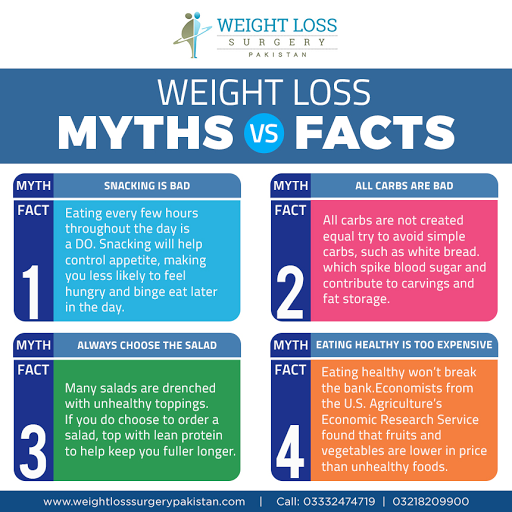
These are some of the things you need to remember when you jump rope for cardio. Proper form matters. You could inflict injury or joint strains if you don't follow the correct form. If you do it improperly, it may even make your workouts less effective. It is important to establish a baseline so you can track your progress. You don't want to do an exercise routine and not see any results.
High knee
The skill level of the person doing the cardio routine will determine how long it takes to jump rope. Beginners can start with 30 seconds of consecutive jumping and move up to 50 repetitions. It takes time to master jumping rope. However, with practice and proper timing, it will become second nature. The best workout for beginners is to jump straight for 30 seconds, then rest for 60 seconds and then repeat the process nine times. Like any cardio workout, it is up to you to find the right technique.
For best results, you should jump for no less than 30 seconds. Alternating feet is a good idea. Jumping higher than the rope's thickness will cause you to waste energy and lead to faster tire wear. To achieve a perfect circle around your body, engage your core and make sure your arms are at a 90-degree angle. Also, wear supportive sports bras to increase the comfort level during jump rope. Listed below are tips on how long to jump rope for cardio.

Alternating foot
Alternating your foot when you jump rope can improve your balance, speed and lightness of your foot. Begin by raising your right foot off the ground and then jumping with your left foot. Next, lower your left foot off the ground and jump with your right foot. This process can be repeated back and forth. After jumping, bouncen quickly, and lightening your stride, it is best to land on the toes.
Once you're comfortable with the footwork and feel confident, you can move onto the next exercise. A classic heel toe step jump rope workout is great for improving footwork. An alternative foot step jumping exercise to burn body fat is also available. This exercise can be done using heavy ropes. Alternate your foot with each revolution. You can make it easier to jump the rope for cardio by moving your foot around each revolution.
Choosing the right length of rope
You should choose the right length rope for you based on your body type and goals. You should choose a longer rope for someone who is taller than you. A shorter rope will work well for someone who is short. You can't cut back on the length. When you buy a rope, check its gauge to make sure it's the right thickness for you.
Step on one end of the battle rope with one foot to check its length. Place your hands in front of your chest. Your elbows should be bent slightly as you pull on the rope. To determine the proper length, you should point the top part of the rope towards the chest. You need to consider your cardio goals and the area in which the rope will be placed. Your sternum should be the same height as the cable. If the cable is more than this, you run the risk that it will hang above your head and fall to the ground.

Creating a baseline to measure your progress
You can track your progress by jumping rope for cardio by creating a baseline. Keep track of your time on one or more jumps. You should ensure you are using proper form and that you do a timed trial before moving on to more challenging exercises. Although there are many health benefits to jumping rope for cardio, the main objective is to increase cardiovascular fitness. These are just a few steps to help you reach your goal.
First, you need to establish a baseline. Set a timer using your watch or phone. Jump until you feel tired. When you feel unable or unable, stop the countdown. Take down the time it took you to stop. This is your baseline. Then, try different footwork patterns and tricks to see how far you can go.
FAQ
Is there a difference between intermittent fasting, calorie restriction, and intermittent fasting?
Calorie restriction is a way to eat less than your body needs. Intermittent fasting differs from other types of intermittent fasting in that it does not restrict calories. Rather, it focuses on eating fewer calories throughout the day.
Intermittent fasting can be more effective as it allows you to eat the foods you love and not feel guilty.
Both methods have pros and cons. Therefore, you need to decide whether you prefer one method over another.
What length of Intermittent Fasting should I be doing to lose weight?
It is not as easy as you think. A number of factors need to be considered when determining how many days of fasting are needed for optimal fat loss. These are:
-
Your age. You may find intermittent fasting too difficult if you're younger (under 40) because you have less time between fasts. If you are older than 60, you might find it difficult to maintain a prolonged period of daily fasting.
-
Your current body composition. Longer periods of fasting are more beneficial if you have a lot muscle mass. If you don't have a lot of muscle mass, shorter fasting periods may be more suitable.
-
How physically active are you. Exercise regularly and you may need to extend the fasting window in order to get enough sleep between workouts.
-
Your health history. Extra fasting may be necessary for people who have heart disease, diabetes, cancer, or other medical conditions.
-
What is your tolerance for stress? Stressful situations can make us eat more. To avoid this problem, you may need to increase the length of your fasting windows.
-
What type of diet do you follow? Certain diets, like ketogenic diets, may require even longer fasting periods.
-
Your sleep quality. Also, a lack of sleep has been linked with increased appetites and decreased metabolism. It may take some trial and error before you find the right combination.
-
The amount of protein that you consume. Protein stabilizes blood sugar levels. Therefore, eating more protein could result in lower insulin levels. This would allow for you to fast more often.
-
Individuals who are trying lose or gain weight will require longer fasting times than those who are trying.
-
What proportion of calories do your fasting hours allow you to consume? Fasting for fewer calories a day can result in more fat loss than fasting to eat more calories a day.
-
Your overall fitness. Faster people are more likely to be fit, and burn more calories during the day.
-
Your gender. Men typically have larger appetites than women, so they may need to fast for slightly longer periods of time. Women are more likely to have smaller appetites and may need to fast only 20-30 minutes every day.
-
Your lifestyle. Are you someone who gets plenty of physical activity? Are you able to exercise several times per week? Do you have a job that requires you to sit at a desk all the time? These things could impact the speed at which you should go.
-
How much money are you willing to spend on food? You don't have to spend much on groceries to eat healthy food. Whole grains can be replaced by white bread, fruits can replace candy bars, and lean cuts of meat can be used to save money.
-
It's important to manage your hunger. You might not have to fast as much if your hunger isn't a problem.
Why not lose weight before your 40th birthday?
Over 40s should be concerned about their health and fitness. It is essential to find ways to stay fit throughout one's life. This includes regular exercise, eating right, not smoking, moderate alcohol, and regular exercise.
It is also important for us to realize that our bodies will change with age. Our bones become weaker, and our muscles begin to shrink. We can slow down the aging process by taking care of ourselves.
There are many benefits to staying healthy and fit as we age. These are:
-
Better sleep
-
Better mood
-
Increased energy levels
-
Lower risk of getting cancer
-
A longer life
-
More independence
-
Better sex
-
Improved memory
-
Greater concentration
-
Greater circulation
-
Stronger immune system
-
Less pain and aches
How often do people fast regularly?
A majority of ketogenic dieters fast one week. However, there are some who fast twice per week. Others fast three times a week.
Each fast has a different length. Some people fast for 24 or 48 hours, while others go for 48.
Some people go on for more than 72 hours. But, such extreme cases are rare.
What foods can I eat to lose weight quicker?
Eating fewer calories can help you lose weight faster. You have two options:
-
Reduce the number of calories you take in daily.
-
Increase the number of calories you burn through physical activity.
Reducing the number of calories you eat is easier said than done. We are constantly being bombarded by calorie-dense fast food options every where we go. Here's how to lose those extra pounds.
-
Beans are rich sources of fiber, protein, and other nutrients. Beans are low in fat and therefore a great choice for those who are trying to cut down on their caloric intake.
-
Oatmeal contains low calories and high amounts of nutrients like magnesium, potassium, and other nutrients. Oatmeal also contains less sugar that other cereals.
-
Eggs are high on cholesterol and protein. Eaten eggs one or two times a week can help boost metabolism and allow you to burn more calories.
-
Whole grain bread reduces hunger pangs. This can help you feel fuller and longer.
-
Dark chocolate is high in antioxidants, flavonoids and other substances that have been linked with lower blood pressure and better heart health.
-
Cottage cheese is rich with calcium, which helps build strong bones. Cottage cheese also contains vitamin D, which can boost immunity.
-
Salmon is packed with omega-3 fatty acids, which promote brain development and improve cardiovascular function.
-
Green tea is chock-full with catechins. These compounds fight cancer and boost metabolism.
-
Broccoli, a rich source of folic acid, is great for lowering homocysteine levels. High homocysteine levels have been associated with an increased risk of stroke and heart disease.
-
Yogurt, which is low in sugar, is a great option to add probiotics to your diet. Probiotics are vital for good digestive health.
-
Berries are a delicious snack option that's also very nutritious. All of these are excellent sources for vitamins and minerals, including blueberries, strawberries and blackberries as well as raspberries and cranberries.
-
Avocados are bursting with healthy fats. A half avocado has only 80 calories and offers plenty of filling fiber and potassium.
-
Nuts are delicious snacks that also provide a lot of protein. Almonds, cashews, hazelnuts, pecans, walnuts, and pistachios are all great choices.
-
Sweet potatoes are another starchy vegetable that's packed with beta carotene, which makes your skin glow. The orange variety is particularly beneficial because they contain higher amounts of beta carotene than regular sweet potatoes.
Statistics
- Among women, the increase in metabolic rate was nearly 4%, or 50 more calories per day (14Trusted Source (healthline.com)
- According to Harvard Health, it's estimated that a 155-pound (70-kg) person burns around 167 calories per 30 minutes of walking at a moderate pace of 4 mph (6.4 km/h) (5). (healthline.com)
- It's estimated that half of all American adults attempt to lose weight every year (1Trusted (healthline.com)
- According to a study sponsored by the American Council on Exercise, a person weighing around 140 pounds (64 kg) would burn 108 calories at a 30-minute beginner's Pilates class or 168 calories at an advanced class of the same duration (26). (healthline.com)
External Links
How To
How to Intermittent Fasting
Intermittent fasting is a dieting method where you normally eat one day per week, usually Monday through Friday. This diet aims to lower your overall calorie intake, while still ensuring you get enough nutrition. This helps you lose fat more quickly than if it were your normal meals for the entire week.
The most popular form of IF is to limit calories to certain days. This means you could skip breakfast every morning and still eat what you want the rest of the week. You could choose to eat three small meals per day rather than two big ones.
You can choose from many different types of intermittent fasting such as alternate day fasting (alternative day fasting), 5/2 fasts (8/4 fasts), 16/8 fasts, and so on. There are pros as well as cons to each form of intermittent fasting. Alternate day fasting is the easiest way to start out because you don't have to make any major changes to your lifestyle. However, for some people it can be difficult to follow a strict diet, so they may prefer to explore other options.
If you are interested in starting an intermittent fasting regime, I recommend beginning with alternate-dayfasting. This will allow your lifestyle to be gradually altered while you transition into more extreme fasting.